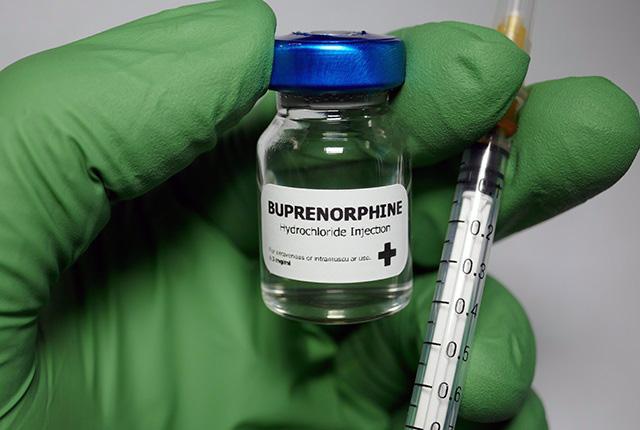
Pilot test of novel opioid-use therapy shows success
Patients’ outcomes were better when they could start buprenorphine without having to experience fentanyl withdrawal.Media Contact:
- UW Medicine: Adrienne Talbot, aetalbot@uw.edu
- Downtown Emergency Service Center: Jessica Schreindl - 206-464-2647, jschreindl@desc.org

A novel treatment protocol for opioid-use disorder significantly improves patient outcomes, according to research published today in JAMA Network Open.
Developed and implemented by Seattle’s Downtown Emergency Service Center, in collaboration with UW Medicine clinicians, this new approach allows patients to begin treatment without stopping fentanyl use. This removes a major barrier to starting buprenorphine, an effective, evidence-based therapy for opioid-use disorder.
Traditional protocols require patients to stop using fentanyl and to experience withdrawal before starting buprenorphine.
In the study, 95 patients were administered injectable-only overlapping buprenorphine that did not require fentanyl withdrawal. The results significantly outperformed traditional methods, with 75% of participants completing the three-day injection series and 64% continuing treatment with a second monthly dose.
“Buprenorphine, as with methadone, is an essential element of the treatment plan for those with opioid use disorder,” said Dr. Richard Waters, clinical instructor of family medicine at the University of Washington School of Medicine.
Waters is the medical director of the Downtown Emergency Service Center. UW Medicine has collaborated with the Downtown Emergency Service Center to provide medical care to vulnerable patients for over 30 years.
“Fentanyl has complicated things, making starting buprenorphine trickier, which led our team to look for potentially easier ways to start this lifesaving medication,” Waters said.
“Our results suggest that this method — using a sequence of long-acting buprenorphine injections that go under the skin — may be a promising alternative for people who have struggled to start buprenorphine in other ways,” he added.
The research took place within the center’s Opioid Treatment Network, a program that delivers care both in clinic and in the field, by meeting patients in shelters, supportive-housing buildings, and encampments. Nearly 80% of study participants were experiencing homelessness or living in permanent supportive housing.
“Being able to get someone started on life-saving medication like buprenorphine without the need for an initial period of withdrawal is particularly important for people experiencing homelessness,” said Dr. Jared Klein, associate professor of medicine, Division of General Internal Medicine, at the University of Washington School of Medicine and senior author of the paper. “This study is a significant contribution to the existing literature around novel methods of starting buprenorphine in the era of fentanyl.”
“Medication alone is not enough,” said Daniel Malone, executive director of the Downtown Emergency Medical Center. “People are more likely to succeed when they have housing, behavioral healthcare, and other robust supports in place. This study shows how integrated care models — linking treatment to housing and outreach — can help people overcome barriers to starting and staying on lifesaving medication.”
While this research received no specific funding, the clinical data analyzed was collected as part of routine clinical operations that receives funding from the King County government, the Washington State Health Care Authority, a State Opioid Response grant from the Substance Abuse and Mental Health Services Administration via the Washington State Health Care Authority, and a grant from the Pacific Hospital Preservation and Development Authority of King County.
For details about UW Medicine, please visit https://uwmedicine.org/about.